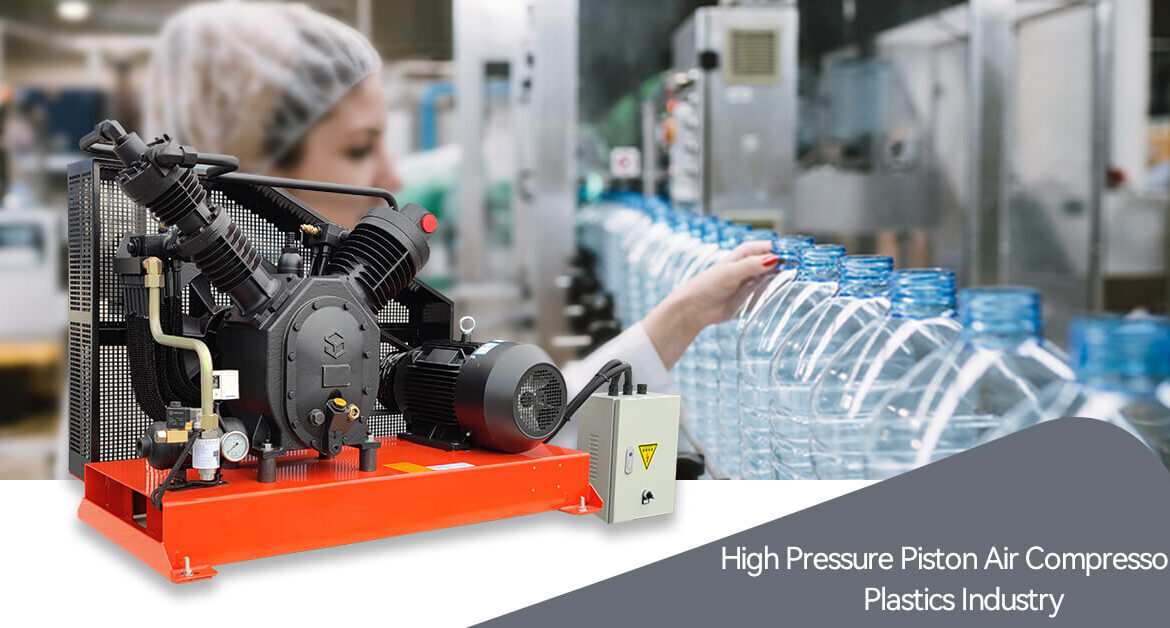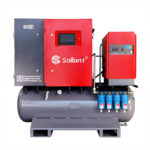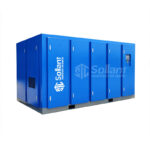An air compressor is a device that uses a motor to compress gas in a compression chamber and make the compressed gas have a certain pressure. As a basic industrial equipment, an air compressor is widely used to drive various pneumatic machinery, pneumatic tools, It is widely used in metallurgy, machinery manufacturing, mining, electric power, textile, petrochemical, light textile and other industries, and is the key equipment in many technological processes.
Air compressor power-saving equipment uses those principles:
1. Main engine energy saving: the selection of efficient and stable two-stage compressor main engine can fundamentally improve the operating efficiency of the unit.
2. Improve transmission efficiency: air compressors often use belts and couplings for transmission. Although belts have the advantages of stable transmission and excellent central air-conditioning power-conserving system, they are usually connected in parallel, and each belt may be caused by uneven force. Uneven load will reduce the transmission efficiency. After the coupling is used for a period of time, the elastic body will be deformed, which will also reduce the transmission efficiency.
3. Reduce friction power consumption: regularly check the quality of lubricating oil, and replace it with lubricating oil with good lubricating performance and low oil viscosity in time.
4. Reduce pressure loss: The gas system includes air filter, intake valve, pipeline, oil separator, cooler, etc. On the basis of ensuring performance, the flow resistance and pressure loss of the gas system should be reduced as much as possible, such as choosing pressure loss Smaller air filter and oil separation core, regular cleaning of coolers and pipes, selection of water pumps with large diameter and low pressure loss, inlet valves for energy-saving systems, etc.
5. Improve heat exchange performance: Air compressors have three types of compressed gas: isothermal, adiabatic, and variable compression. Theoretically, isothermal compression consumes the least energy. The unique inter-stage oil injection system of two-stage compression makes the air compression process tend to be isothermal. Compression improves the efficiency of the host.
6. Frequency conversion speed regulation energy saving: the energy consumption of conventional air compressors in the unloaded state can reach 40% of the full-load energy consumption, while the air compressor does not generate compressed air in the unloaded state, so the waste caused is very serious. Using frequency conversion Adjustment can automatically adjust the output power of the motor according to the gas consumption of the equipment, eliminating the unloading condition, and the energy saving effect is obvious.
7. Pipeline energy saving: reduce the length of the power-saving system of the pipe mine pulverizer as much as possible, reduce the number of pipe elbows used, and regularly check the pipeline for leaks. The size of the main pipe connected to the air compressor in the air compressor station When selecting, it is best to ensure that the flow rate in the pipeline does not exceed 6m/s. When leaving the air compressor station to the main pipeline, the size selection should ensure that the compressed air flow rate does not exceed 9m/s. More than 15m/s.
8. Post-processing energy saving: On the premise of meeting the performance requirements, select filters and dryers with small pressure loss. From the perspective of energy saving, use a dryer with low pressure loss and zero air consumption. The pressure drop of the machine can be controlled within 0.3bar .
Sollant Focus on Energy Saving



